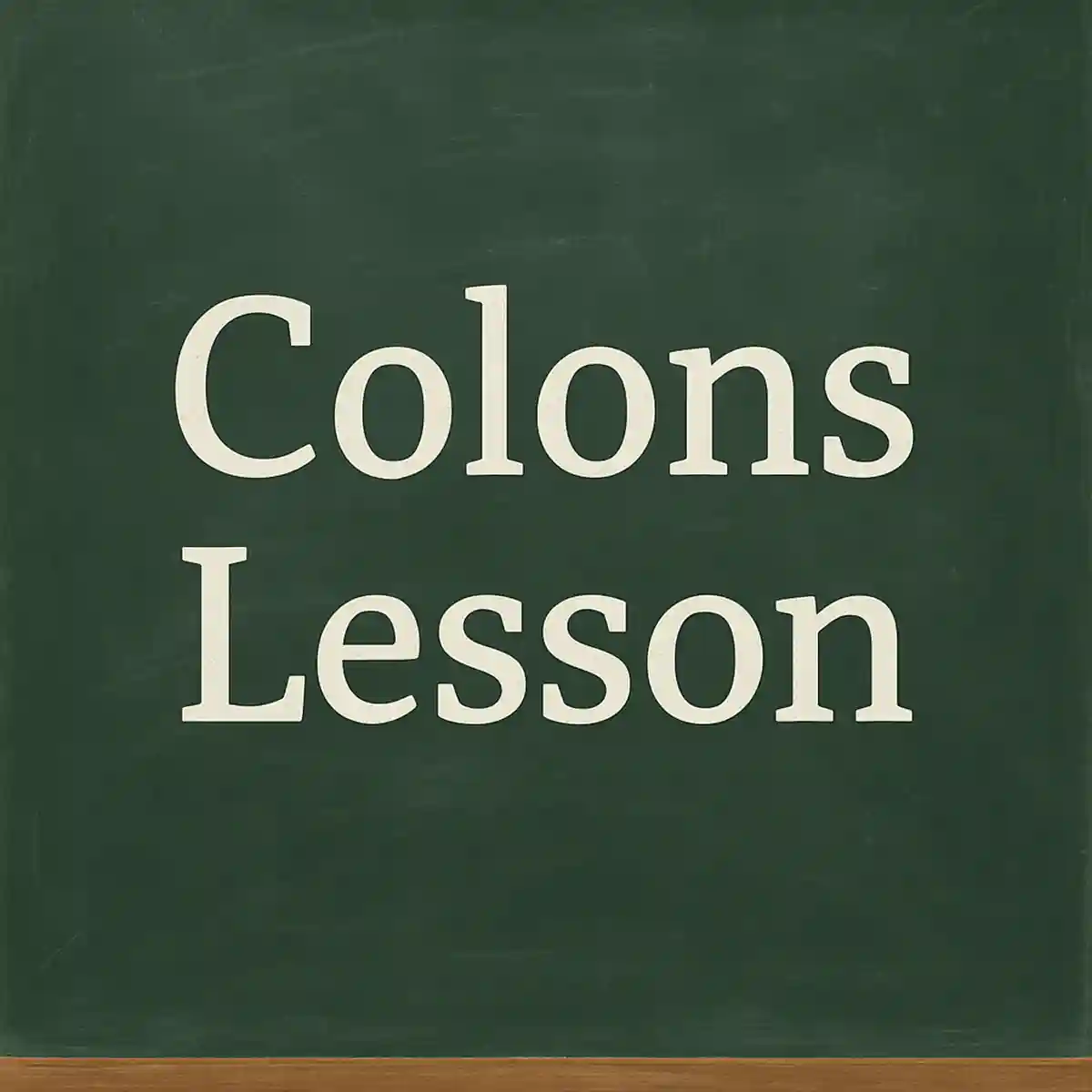Colons Lesson: Mastering the Pause of Emphasis
Colons may look like two little dots, but they pack a punch in writing. They announce, emphasize, and introduce. In this lesson, we’ll go through the main rules of using colons, practice together, and then try some exercises on your own.
📘 Rules for Using Colons
Use a colon to introduce a list after a complete sentence.
Example: I need the following supplies: pencils, paper, and a ruler.
Use a colon to introduce a quotation after a complete sentence.
Example: She had one rule: “Always tell the truth.”
Use a colon to explain or expand on what comes before it.
Example: There was only one solution: run.
Use a colon for emphasis.
Example: He knew what was waiting for him: failure.
Do not use a colon after incomplete sentences or verbs.
❌ My favorite fruits are: apples, bananas, and grapes.
✅ My favorite fruits are apples, bananas, and grapes.
✍️ Practice Together
Add colons where needed:
I brought three things with me my phone, my charger, and my earbuds.
He had only one goal win the championship.
She remembered her mother’s words Always be kind.
We visited several cities Toronto, Ottawa, and Montreal.
The solution was clear call for help immediately.
✅ Answer Key (Practice Together)
I brought three things with me: my phone, my charger, and my earbuds.
He had only one goal: win the championship.
She remembered her mother’s words: “Always be kind.”
We visited several cities: Toronto, Ottawa, and Montreal.
The solution was clear: call for help immediately.
📝 Practice Alone
Now it’s your turn! Rewrite the sentences below by inserting colons where appropriate.
Download Student Quiz Sheet
Download Teacher Answer Key
Conclusion
Understanding how to use colons adds clarity and impact to writing. When students learn to introduce lists, explanations, quotations, and emphasis correctly, their sentences become stronger and more precise. With a bit of practice, using colons becomes second nature, helping students communicate ideas with confidence and style.







